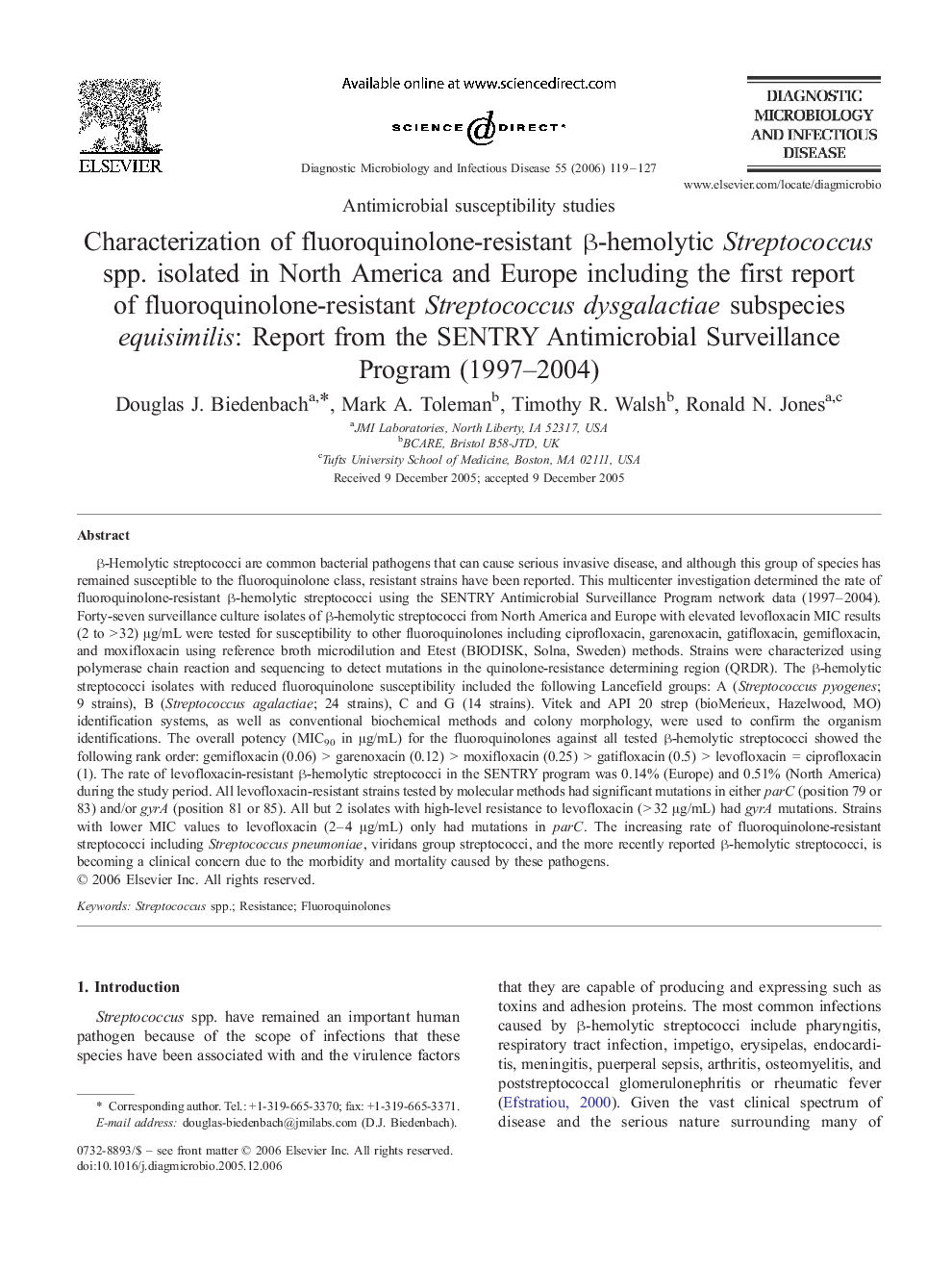| کد مقاله | کد نشریه | سال انتشار | مقاله انگلیسی | نسخه تمام متن |
|---|---|---|---|---|
| 3348780 | 1216039 | 2006 | 9 صفحه PDF | دانلود رایگان |

β-Hemolytic streptococci are common bacterial pathogens that can cause serious invasive disease, and although this group of species has remained susceptible to the fluoroquinolone class, resistant strains have been reported. This multicenter investigation determined the rate of fluoroquinolone-resistant β-hemolytic streptococci using the SENTRY Antimicrobial Surveillance Program network data (1997–2004). Forty-seven surveillance culture isolates of β-hemolytic streptococci from North America and Europe with elevated levofloxacin MIC results (2 to >32) μg/mL were tested for susceptibility to other fluoroquinolones including ciprofloxacin, garenoxacin, gatifloxacin, gemifloxacin, and moxifloxacin using reference broth microdilution and Etest (BIODISK, Solna, Sweden) methods. Strains were characterized using polymerase chain reaction and sequencing to detect mutations in the quinolone-resistance determining region (QRDR). The β-hemolytic streptococci isolates with reduced fluoroquinolone susceptibility included the following Lancefield groups: A (Streptococcus pyogenes; 9 strains), B (Streptococcus agalactiae; 24 strains), C and G (14 strains). Vitek and API 20 strep (bioMerieux, Hazelwood, MO) identification systems, as well as conventional biochemical methods and colony morphology, were used to confirm the organism identifications. The overall potency (MIC90 in μg/mL) for the fluoroquinolones against all tested β-hemolytic streptococci showed the following rank order: gemifloxacin (0.06) > garenoxacin (0.12) > moxifloxacin (0.25) > gatifloxacin (0.5) > levofloxacin = ciprofloxacin (1). The rate of levofloxacin-resistant β-hemolytic streptococci in the SENTRY program was 0.14% (Europe) and 0.51% (North America) during the study period. All levofloxacin-resistant strains tested by molecular methods had significant mutations in either parC (position 79 or 83) and/or gyrA (position 81 or 85). All but 2 isolates with high-level resistance to levofloxacin (>32 μg/mL) had gyrA mutations. Strains with lower MIC values to levofloxacin (2–4 μg/mL) only had mutations in parC. The increasing rate of fluoroquinolone-resistant streptococci including Streptococcus pneumoniae, viridans group streptococci, and the more recently reported β-hemolytic streptococci, is becoming a clinical concern due to the morbidity and mortality caused by these pathogens.
Journal: Diagnostic Microbiology and Infectious Disease - Volume 55, Issue 2, June 2006, Pages 119–127